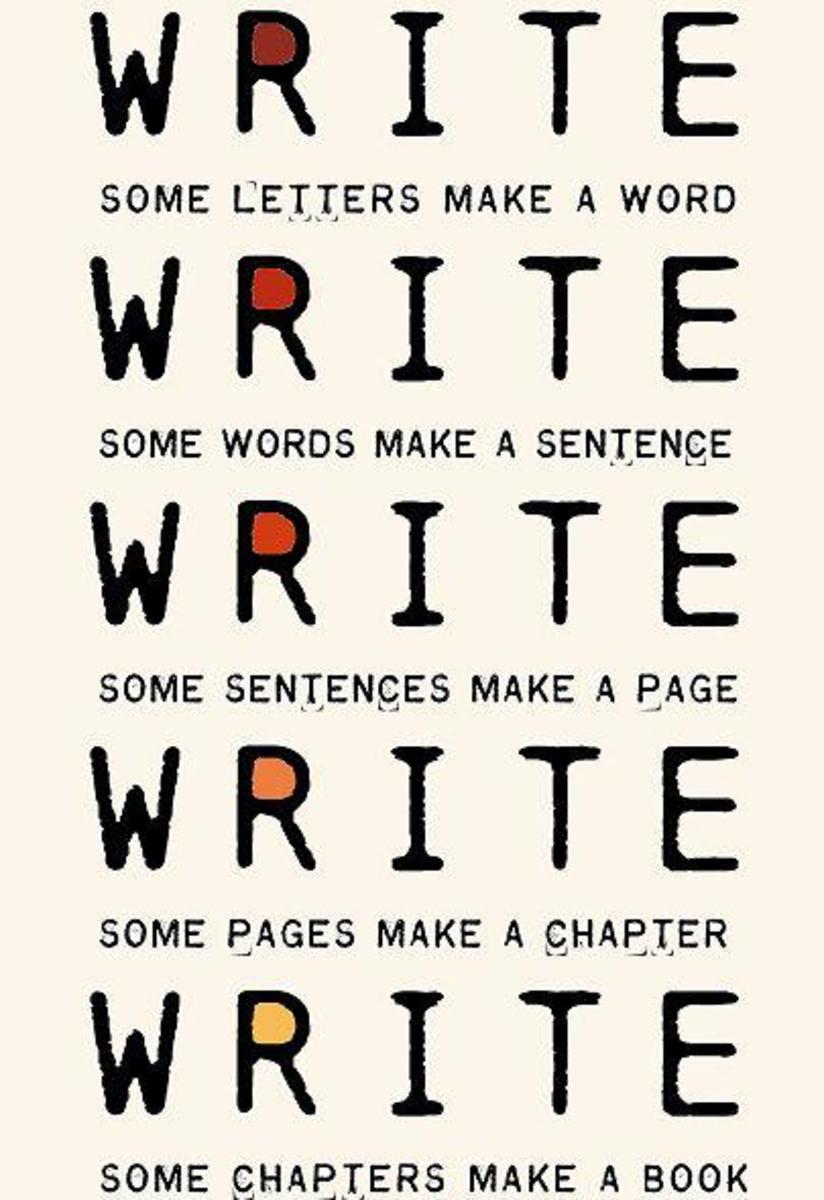Writing Tips - Building a Character
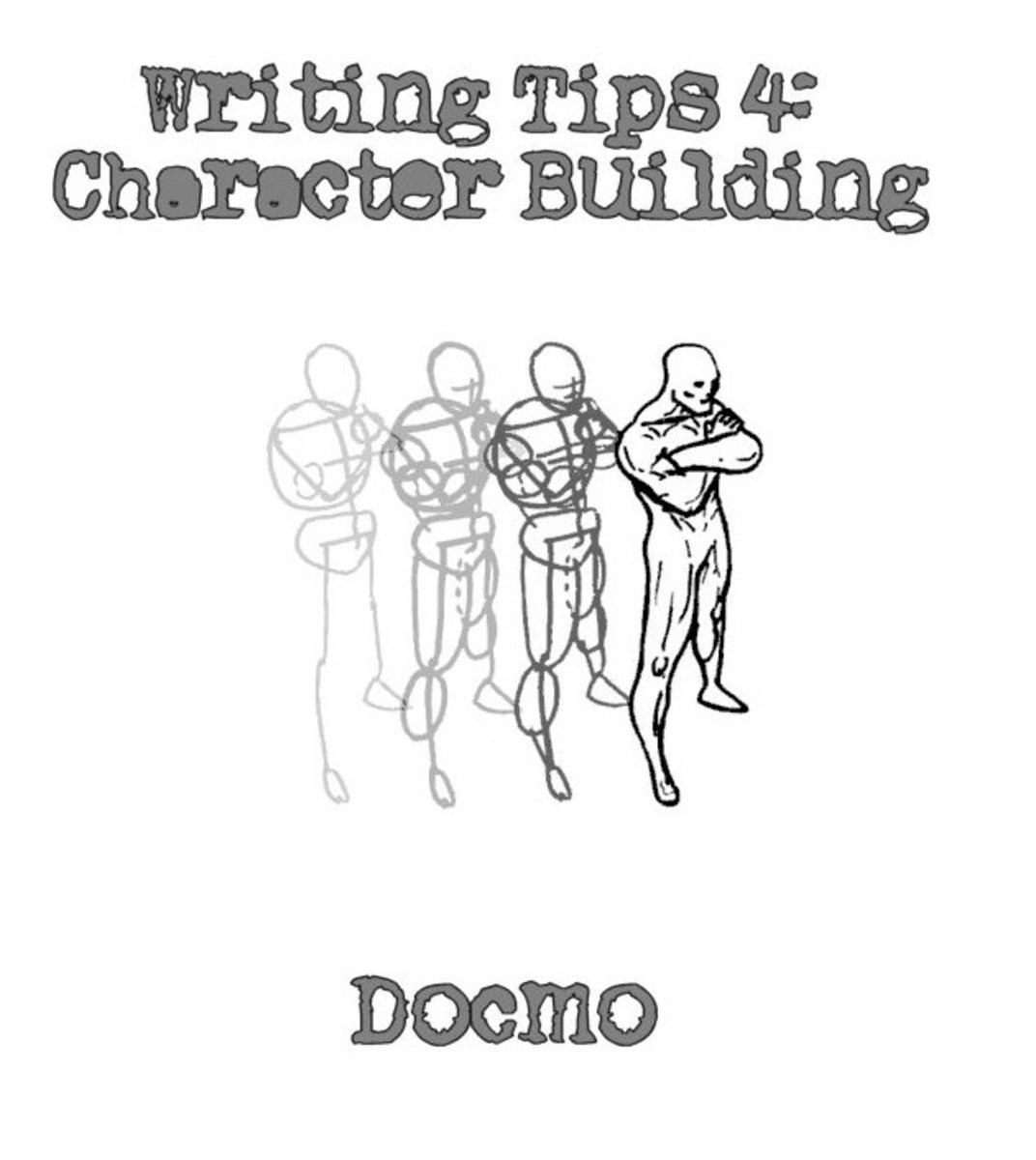
The Art of Creation
What is a world without characters? You may build the most luxurious, creatively stunning world in your story but without characters to populate in and interact with this literary landscape, the world will be but an empty facade. Like a dusty and rusty fairground, with wind howling through chasing dust clouds, a mere shell of abandoned wonders.
Great characters don’t always spring fully formed from the creative womb. They need sculpting.
At first they may be a faint echo of a distant memory, a hazy vision in a smoke filled room, a silhouette emerging from the horizon or riding away into the dusk sky. They loiter in your mind, like drunken loners in a late night bar waiting for you to strike a conversation. They may hover in your peripheral vision, shy and retiring. They may dart from shadow to shadow like a persistent stalker. They may recline lustily on a barstool with a cigarette hanging from ruby red lips, waiting for a light.
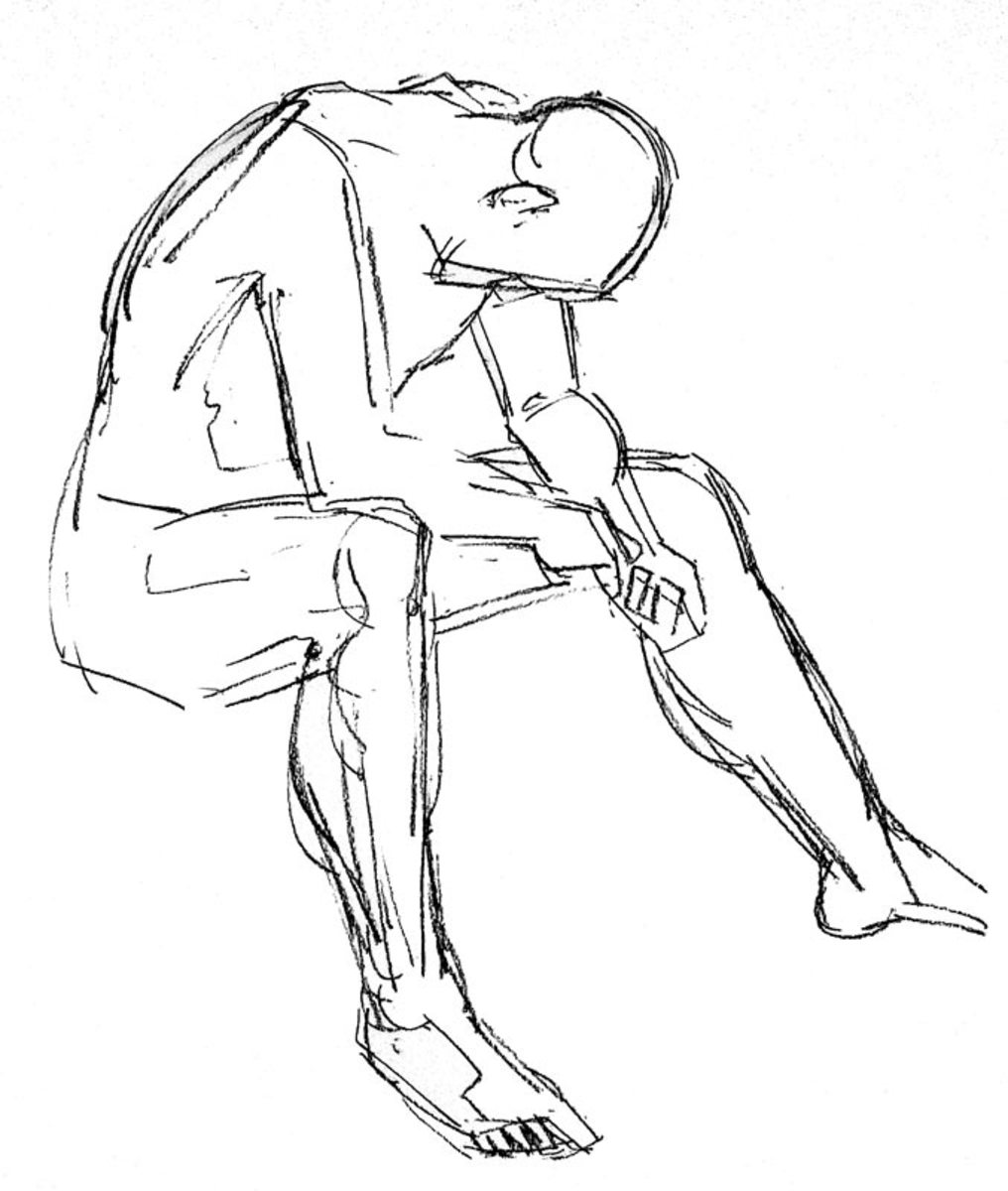
You need to turn your Godlike gaze on them, giving them form and function, moods and motivation. They need to become three dimensional, nay, even four dimensional. Because they not only need a fully fleshed out intensity but a chronology - a past and a present.
It is then, and only then, they are ready to populate your world and escape into the readers mind. The good, well drawn, intricately sculpted ones stay etched in your reader’s memory. They go on to have lives of their own. Others fall flat, like a marquee in a movie theatre foyer, full of brash colour and bravado, but nothing behind them.
So, come, let us see how we can sculpt ourselves some memorable characters, those that may well become our lifelong friends, and go on to breathe life into our creative worlds.
You need to turn your Godlike gaze on your characters, giving them form and function, moods and motivation. They need to become three dimensional, nay, even four dimensional.

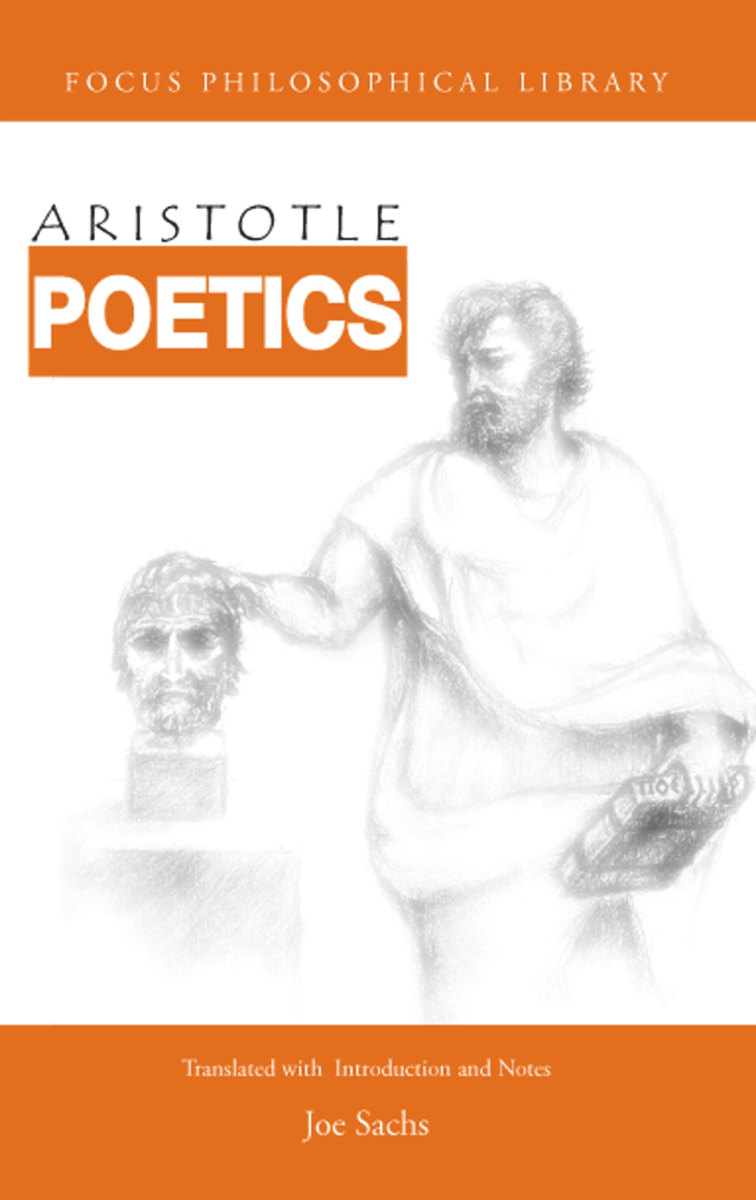
Classical Analysis
The use of words like ‘sculpting’ ‘etching’ is not a metaphorical coincidence. The origin of the word ‘character’ comes from the Greek ‘ charaktḗr’ which means a graving tool and the mark the tool makes. In fact charak –means the etched or sculpted outline made by an engraver. Therein comes the word character, a carefully etched figure constituting multiple lines and components that defines that person.
The earliest known analysis of character comes from Aristotle. In his Poetics, he defines character ( ethos) as one of the six elements that comprise of tragedy. The others are plot ( mythos), thought ( diaonia), diction (lexis), melody ( melos) and spectacle ( opsis).
In Aristotelian times he places the character secondary to the plot but stresses on the importance of both.
Characters can drive action and the plot. The Plot can shift characters and influence them. But to me, you need both. Take character and plot away and all you have got is empty spectacle, pure thought, a lot loose talk and random chorus!
'Characters are objects of imitation… personal agents, who necessarily possess certain distinctive qualities both of character and thought…. These – thought and character – are the two natural causes from which actions spring.'
— Aristotle, Poetics Part VI
Elements of Drama - Aristotle
Greek Name
| English Translation
| Description
|
|---|---|---|
Mythos
| Plot
| A structure of incidents or actions. The characters can undergo an arc through the plot, and the audience may prefer complexity, elements of surprise, entertainment, Catharsis and thrills
|
Ethos
| Character
| Accordign to Aristotle, main character must be good, perhaps flawed, may make a mistake, may have a realisation and may ultimately succeed or fail.
|
Dianoia
| Thought
| In Drama this is the outspoken reasoning and thought behind actions of chracters. The motives and driving factors.
|
Lexis
| Diction
| The quality of speech, that represents the character. Their voice, their inflections, their intentions
|
Melos
| Melody
| The chorus , the music that shares the action and is integral to the unfolding drama
|
Opsis
| Spectacle
| The visual spectacle, the setpieces, the backdrop, the costumes and props.
|


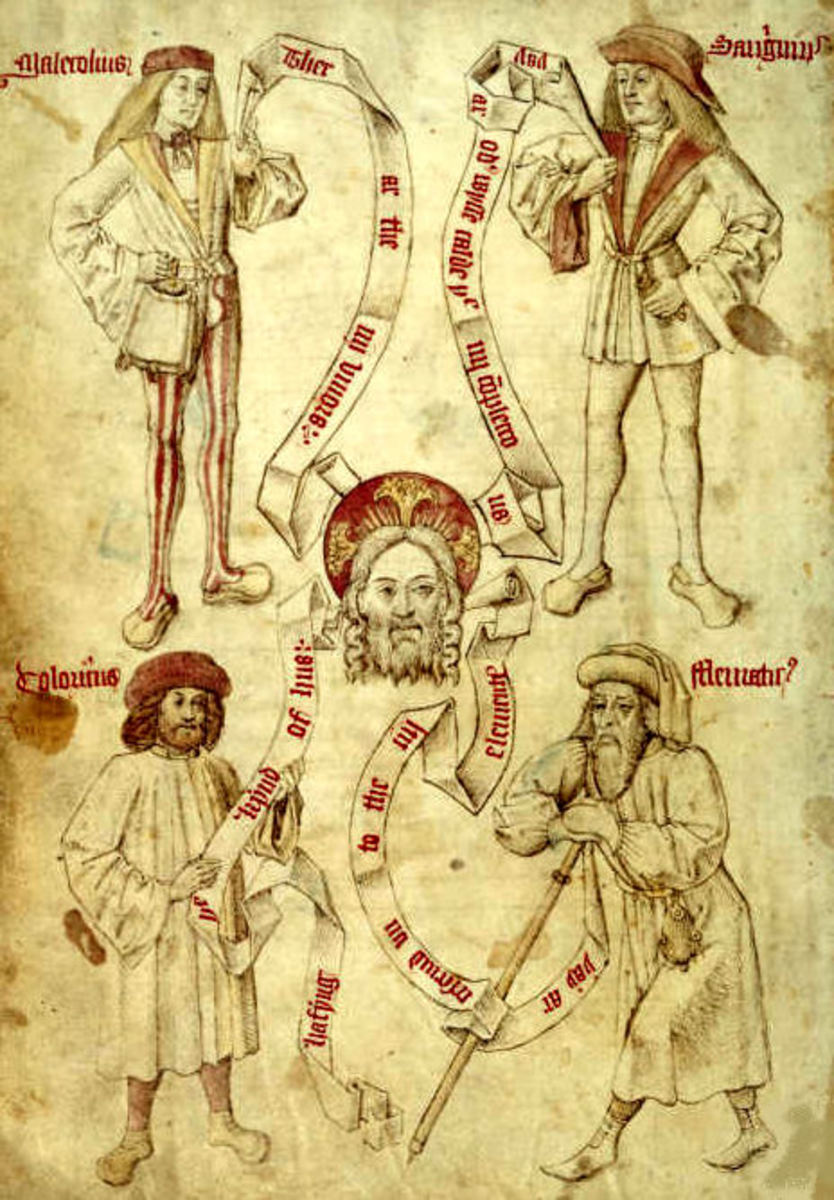
Being observant and using swatches of various people we know is a good way to sculpt a new character. It is also worth knowing what personality types are out there, to help us flesh out mood and motivation.
Character Types
Characters are people. And people have personality traits. Far too often, writers tend to get obsessed with appearance rather than action. To me, the action and behaviour of the character is what makes them stand out. (Unless the story calls for specific physical traits and the traits are inherent to the plot). Actions, as always, speak louder than words. A good character shows his or her personality through a set of behaviours and actions. A good character does not need to writer to describe their traits but instead trust the reader to infer them through the actions in a scene, through how they react.
There are also classic moods and temperaments your character may have. The Broad classification of temperaments exists from ancient Greek days.Choleric, Sanguine, Melancholic or Phlegmatic. The Greeks believed our characteristics come from the balance of our humors (or inner fluids - bile, blood ,black bile and phlegm respectively.)
Although we have limitless imagination to conjure up a character, depending on the genre, a believable personality type (with enough twists – if you want to) is worth drafting. We all fall under certain categories of psychological types. While being observant and using swatches of various people we know is a good way to sculpt a new character, it is worth knowing what personality types are out there. The words character, personality and individuality refer to the sum of the traits possessed by a person that makes them whole.

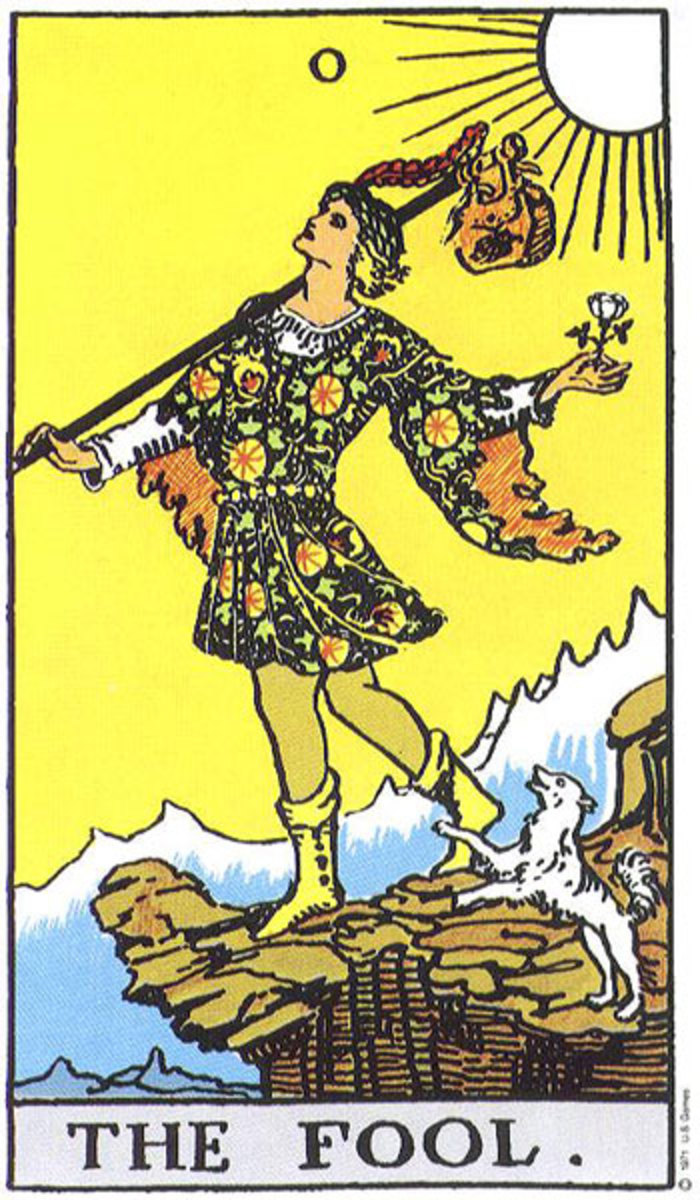
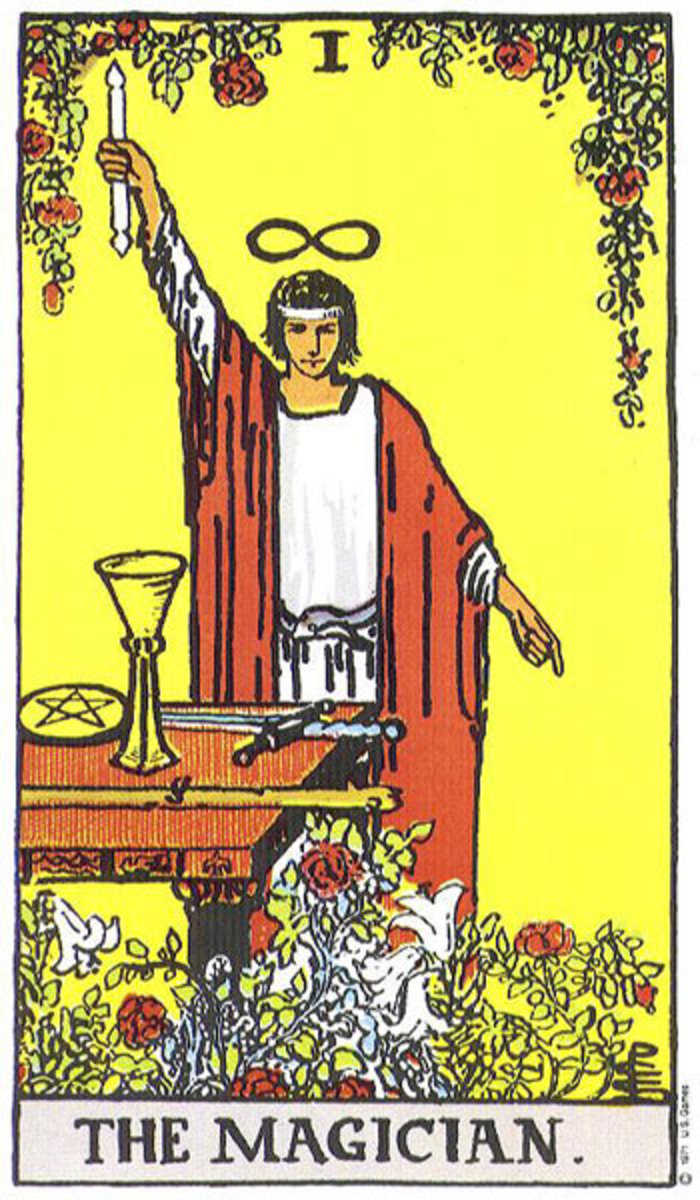
Archetypes
Carl Jung also described archetypal story characters. Those from fable and mythology, those that have been adapted by countless authors, storytellers, dramatists from time immemorial. These stock characters have helped populate many stories, be it a comedy or tragedy, revenge drama or moralistic fable, A quest or a descent down an abyss.
Jungian archetypes is not an orderly world. It is populated with persons or animals, situations or concepts. Jung didn't even suggest listing them but used these principles throughout his books and lectures as did his colleagues.
Jungian archetypes are so powerful that people are drawn to them unconsciously. Whether it is the brave hero or a comic fool, a wise magician or a nurturing mother, these archetypal characters are so ingrained in our collective conscious one cannot escape them. It is alright to populate your story with archetypal characters as long as they dont descend into cliché.
It seems to me that the origins of archetypes can only be explained by assuming them to be deposits of the constantly repeated experiences of humanity.
— Carl Jung
My Process
So how do I build a character? Let me take you through the process using an example of a story I am working on. The story is about memory and loss, a child abandoned by her father when little and how this loss has defined her as she has grown up. A sudden change in her life brings everything back and creates further change and upheaval.
To me she is the protagonist, the main character, the heroine who drives my story. She is also the narrator.I need a name, her age and a rough physical make up. Let me call her Susan. A sensible name. None too frivolous. I imagine her in her late thirties, beautiful but unadorned. She is a successful neurologist and an academic so I presume she will live somewhere close to the hospital – say in London. She is practical and perhaps attached to her job so wouldn’t like long commutes. She also is a bit of loner and it is easy to hide in the millions teeming the city than live in a country cottage where it is difficult to hide in a rural landscape. She is single.
She wears plain but smart clothes and her wardrobe is practical. Smart suits and blouses for work, jeans or trousers and tops when causal. Rarely wears a dress as she doesn’t feel ‘girly’. She goes to the gym, as working out helps her expend some energy. loves reading and watching films at home.
Six Steps to Creating a Character
Here are my Six steps to character creation, I have tried to break down the process I unconsicouly perhaps go through when I think about characters. This doesn't mean you have to go through this every time.
Sometimes characters arrive fully formed in your story. Sometimes you it could base them on someone you know or even as a collage of characteristics from different memories.
Step 1: Start with the Basics
Okay. Lets' get down to business. You've got an idea for a plot. You now want the protagonist, the main character. You need to decide if it is going to be a male or a female ( or a transgender, if the plot demands -who says it has to be a human?!). What age is this character? Try to give them a profile, vital statistics , an image. While appearances may not always be important when it comes to writing, as an author I always like to imagine what they look like- this doesn't mean I'll describe them in vivid detail in the story, it is just so I have this in my mind as I write and perhaps nuggets of information may come out about them. where do they live? what do they do? any hobbies? Single? Married? In a relationship or not? This is primarily because this fleshes out your character.

Susan's Past
When Susan was a small child, about 8, she watched her father walk out in the rain with his camera case and a small suitcase. He always does this as he goes on professional commissions as a photographer.
He never normally waves as he does kiss her when he leaves but once outside he always purposefully strides off. But this time he kisses her, goes out but as he reaches the end of the drive, he turns back and waves to her. She knows as a child that this means something. She lays awake at night wondering. He never comes back.
Raindrops on glass windows always make her sad. She grows up with a bitter, upset mother who suffocates her only daughter and refuses to let her go. Her mother somatises and has several imaginary illnesses and the doctors office becomes her favourite haunt.
It is here , dragged unwittingly by her mother, that the little girl learns to like medicine. Eventually doing a degree, even if it is just to answer her mother's various questions about her symptoms!
The only reminder of her father is an old photograph. As her father took all the photos he is never in any with her. There is one she manages to keep, one which her mum took awkwardly.She can only see his arms draped around her tiny shoulders and his chest as her mother accidentally cut his face off the frame when taking the picture.. Her mother has destroyed all other old photographs of him when he left her.
This particular photo is monochrome, in a shade of Sepia. that is the title of my story, Sepia. I like the sound of it.
Step 2: Give the character a Backstory, a past
Characters need a backstory. A past that defines them. Be it a protagonist or an antagonist there are past incidents, childhood memories, grudges and gripes, or happy nostalgia that they carry with them. It may be a neatly organised album of memories and incidents. It may be dark secrets. It maybe shameful incidents they want to hide. It may be lost loves or abandonment. There maybe ridicule or past glory that they still live in.
Some may have a faded past, they may live under delusions of what it once was. Some may have no recollection at all. Some may have erased the past and want to start fresh. But the past may come back to haunt them. These links are vital as it pervades the present story. Sometimes the past is but a small footnote to the actual plot. But sometimes it can be a major influence on how the character acts and behaves.
There is also a chance that the past they carry with them is not their own,. It maybe their parents or their families. Or it maybe that of a close friend.
Give them some mementos of the past. Some kind of object or a talisman , a keepsake. something to remind them of what went on. something that may bring back memories. an object, a smell, a scene or a piece of music, anything.
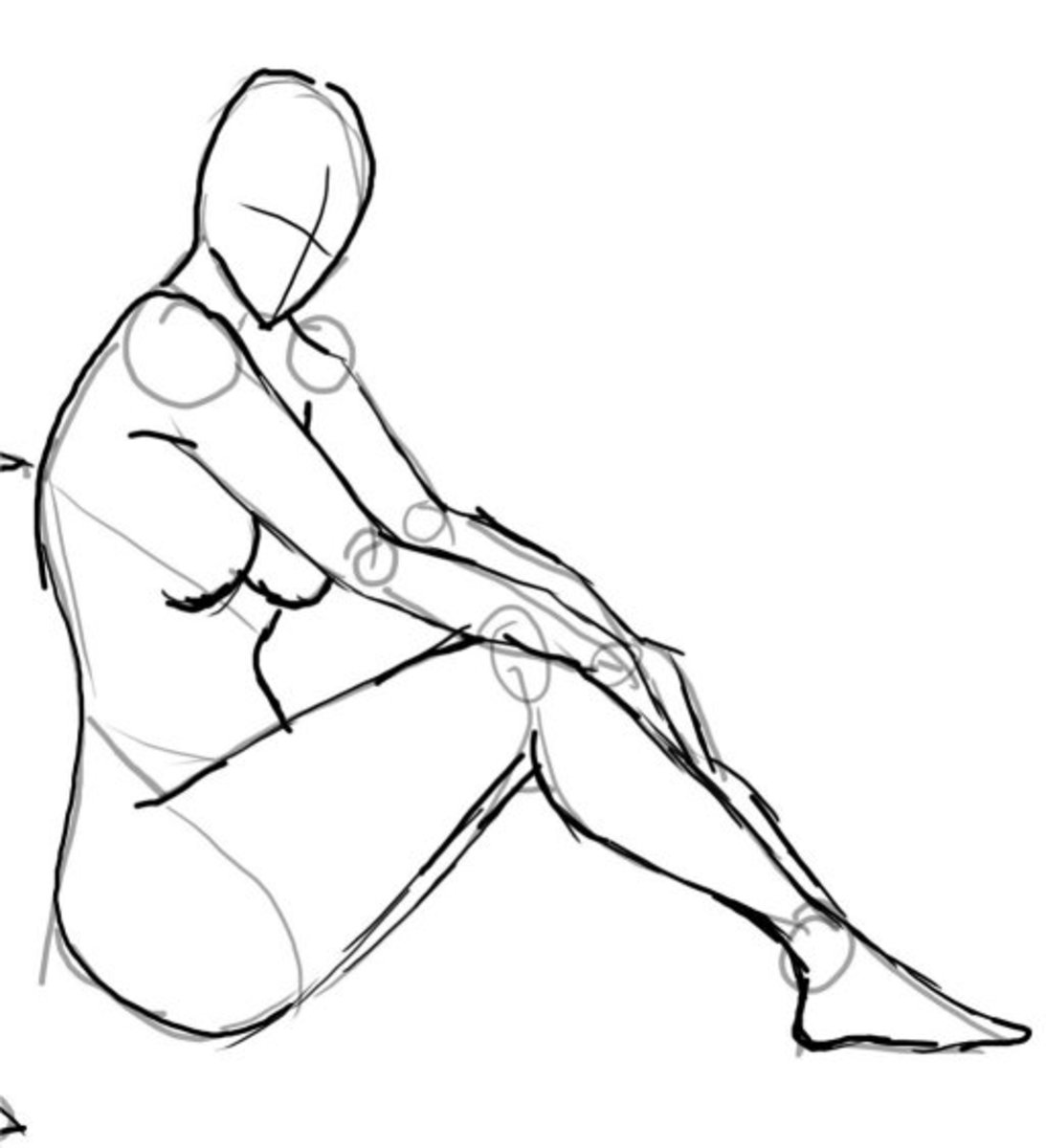
Susan's Goal
Susan wants to see her father. To ask him why he felt it was ok to leave her. She thought she was his golden girl. Susan also wants to forget him and move on. She wants to be happy in a relationship but cannot as she is haunted by mistrust of abandonment. She tries half hearted attempt at dating but can never relate fully. She comes across as cold and retiring while she is actually quite passionate.
She realises that the most hurtful thing inside of her is the fear that her father has forgotten her and moved on. She knows he may never come back. But she wants to know she is still in his mind, his memory. She wants to be part of her absent fathers thoughts, to mean something.
As a neurologist she works in the field of memory. She works with people who are losing their memory and helps to restore as much as she can. But her job reflects the futility of her quest as people with dementia rarely get better. She can only delay the inevitable. She is researching to see if she can help reverse the memory and bring them back. She wishes for a scientific breakthrough that helps this quest.
Step 3: The characters wants, desires, goals
It is important that your character has a want, a goal , a desire or a purpose. Aimless characters never make great heroes. Even if your protagonist stumbles unwittingly into a crisis or a plot- then they will still have a want - to escape or merely stay alive.
So build in a want: a rare object, a status, security, money, a relationship, a lover, to be reunited, to return home anything.
Then build in obstacles to achieving this goal. It may be fate it maybe the antagonist who stops them. It can also be lack of a certain skill or an attribute that stops them achieving their purpose. The obstacle frustrates them many times, they may see the object of their desire slip away several times. They wish they could have it. They don't know how. They may resign themselves to failure or they may continue relentlessly.
Sometimes they think they want something but actually it is not what they need. They realise this half way through the quest.

The Turning Point
Into this world of Susan arrives a handsome fellow colleague, who takes it upon himself to try and melt the ice maiden. She resists at first but then feels she could warm to him. He gets her, he understands and likes her brilliance and hidden passions.
She is hesitant at first, cold almost and then slowly thaws. And the none night she feels she could really shake loose her past and go for a real relationship finally. She is on call at the hospital and just as she gets ready to go back home.
They wheel a patient in with a worried family. He has had a convulsion, a fit. He is an old man who has been ill with memory disturbances but has been trying to shake it off. His family has been pleading with him to go to the doctor. Bu t finally when he has a fit they call an ambulance.
It is her father.
Step 4: Create conflict, Introduce change
Into this world let your character experience conflict or conflicts that would drive the story and the character forward. As characters can't just be, they need change, they need transition, they need conflict that makes the reader sit up and take notice.
It could be another character who interacts. It could be an accident, a missed flight, a new arrival, a loss or a past come rushing back. It could be a sudden fortune or misfortune. It could be an inadvertent mix up.
But the arrival of this change is only the beginning. It is not the end of the tale or quest. The new arrival throws the orderly, staid world into chaos and turmoil. It maybe what they have always been wishing for but when they actually get it it doesn't make them happy instead it may make them worse, even more conflicted!
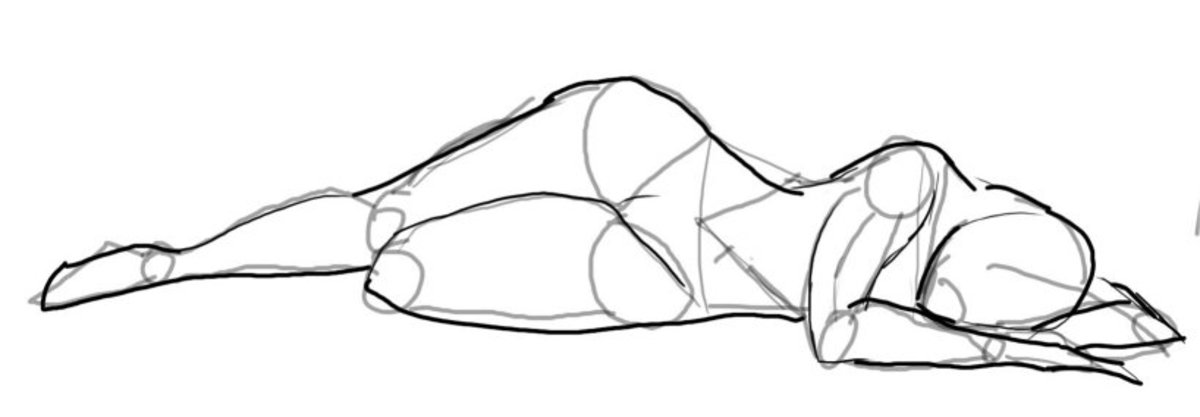
Susan's Traits
She has her hair pulled back in a tight bunch. Only when at home she lets it loose as she has curly hair. She talks precisely, never a word out of place. She has incredible memory- she can recall passages from books and films very well.She hides this fact, that she has eidetic memory as she doesn't want to feel like a freak.
She walks purposefully, head held high and straight backed. She doesn't like slouching. She is fit and toned from the gym.
She likes the colour purple. She doesn't like drinks with ice as the frosted glass that sweats remind her of the rainy window as her father left. She is tidy and organised. She hates chaos. She likes to make plans.
She likes the smell of malt whiskey as she remembers her dad drinking them.
Step 5: Lexis and Opsis
Aristotle did talk about speech and spectacle. We need to convey a sense of how our character moves, talks and presents themselves. Do they have little foibles, little tics of personality. How do they convey their emotions to outside. What do they do if they are angry- do they clench their fist, grit their teeth or pull their earlobe?
How about passion- do they lick their lips, brush their hair or stroke their neck. Do they worry their necklace nervously?
Do they talk with a nervous stutter? Do they doodle on table mats? Do they have OCD traits? Do they always wear a certain colour?
Do they speak with an accent? Do they swear?
Do they interrupt often or do they stay silent and speak briefly?
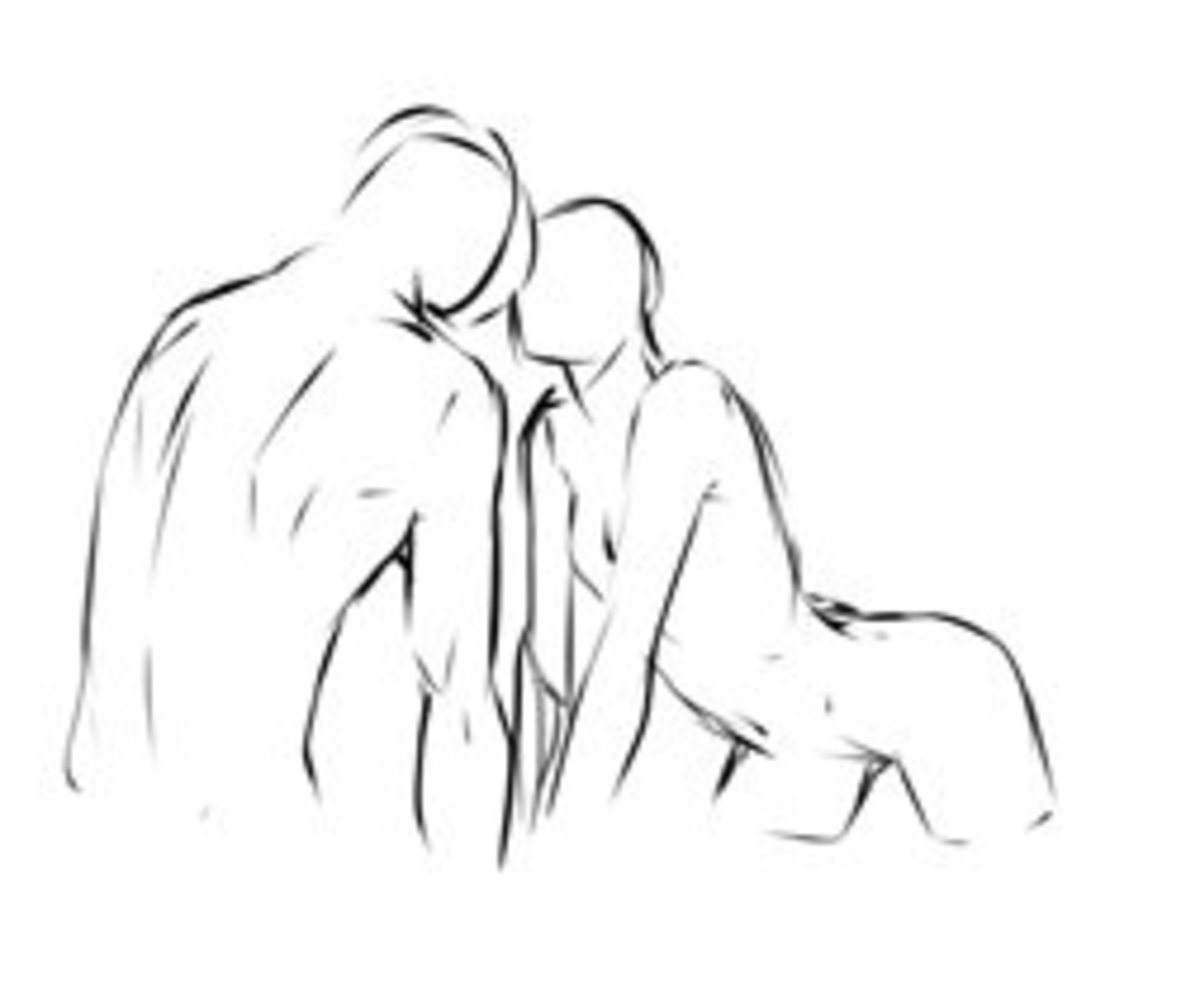
Sepia - the beginning of my story
When I was eight, my father left us never to come back. He just grabbed his coat and the metal case of photo equipment, kissed my mother’s flour stained chin, nuzzled my forehead till his moustache tickled me and left on what was supposed to be one of his work trips. That was the last we saw of him.
I pressed my face against the window and watched him walk down the rain-soaked street sidestepping a puddle. Rivulets of rain ran down the window and glistened like molten silver. I will always remember the way he walked. Leaning slightly to one side to balance the weight of the case but still seemingly erect and swaggering, like a man who knew what he was doing and where he was going. As he rounded the corner he turned and hesitated as if he had forgotten something. He then did something he does not usually do. He waved to me and blew me a kiss. Then he was gone leaving an empty street with raindrops dancing a parade on the puddles.
Even now the rain on a window makes me sad. It is not your everyday, run of the mill sadness. This is more like an iron fist squeezing my gut. It’s no good that I live in London. I should move to the Sahara.
My mum never recovered from my father’s disappearance. She became fretful and depressed. She never found another man but found solace in her various illnesses. Some imaginary, some real. Some that became real when she imagined them long enough. But all equally important to her sorrow soaked mind. The Doctor became her best friend, the clinic her social club. She always took me with her. I used to cringe as my mum reeled off her latest list of ailments. The Doctor, bless him, was a patient man. He always listened. Head tilted to one side, tap tapping his pen on the table, occasionally looking at me and giving me a half smile before he returned to nodding like a metronome. “You have a pretty little girl, Mrs Miller. And very quiet too. Now about that backache…” ...
Step 6: Decide their future/ put it all together
You're the creator. You can decide to kill your character off or make them live happily ever after. You can devise cunning little traps for them or give them gifts of joy. Your overall decision sometimes helps to plot the trajectory of the character. If you want to teach your character a lesson, you may want them to behave like an ass all along until they get their come uppance. The reader will love this. Or you may decide the underdog will win, the young boy will come of age and triumph. If so their abilities will grow, their good behaviors can be rewarded.
More importantly, it is the craft of unfolding your character to the reader that matters. It is way their mannerisms, behaviors, attitudes, subtle characteristics that manifest in the story that makes them closer and more memorable to the reader.
So in summary:
1) At the start, decide on some basics - gender, age, appearance, the characters role in your story. Visualise them in your mind. Maybe use collages of people you know or people you may have watched.
2) Give them a past - if they are a major character - have a little backstory. Their childhood, education, dark past, guilty secrets etc.
3) Give them some goals, wants or motives: this could be material or a simple wish for something. Every character has something to offer to the story.
4) Create conflict, introduce change. Through them a scenario and see how they respond and react.
5) Give them mannerisms, speech and behaviours that make them stand apart. Don't use them just like a dummy. Even small characters deserve some uniqueness.
6) And finally put it all together, watch them form like a clay figure on a spinning potter's wheel. Sometimes they grow in ways and shape more than you had envisioned, let them breathe and thrive see what they come up with. give them some independence and they may reward you with unforeseen consequences, making your story even richer.

Character Arc
The characters in Greek Tragedies are mere vehicles for the plot to be told and do not often have significant purpose beyond driving the story forward. They can represent and mimic reality (Mimesis), offer purging of emotions to the audience ( Catharsis), undergo turning points ( Peripeteia) have crucial revelatory moments ( Anagnorisis) or do critical miscalculations that result in changes ( Hamartia).
Our characters too can suffer or endure similar fates or plot machinations.
A character Arc refers to the journey the character undertakes through the story. This maybe a journey of self discovery, a trip into the unknown. It maybe a quest for love, to solve a mystery or for redemption. An arc makes the character real and their suffering becomes the reader's as does their joy at happy endings.
An example of a hero's inner journey is below and it travels clockwise.
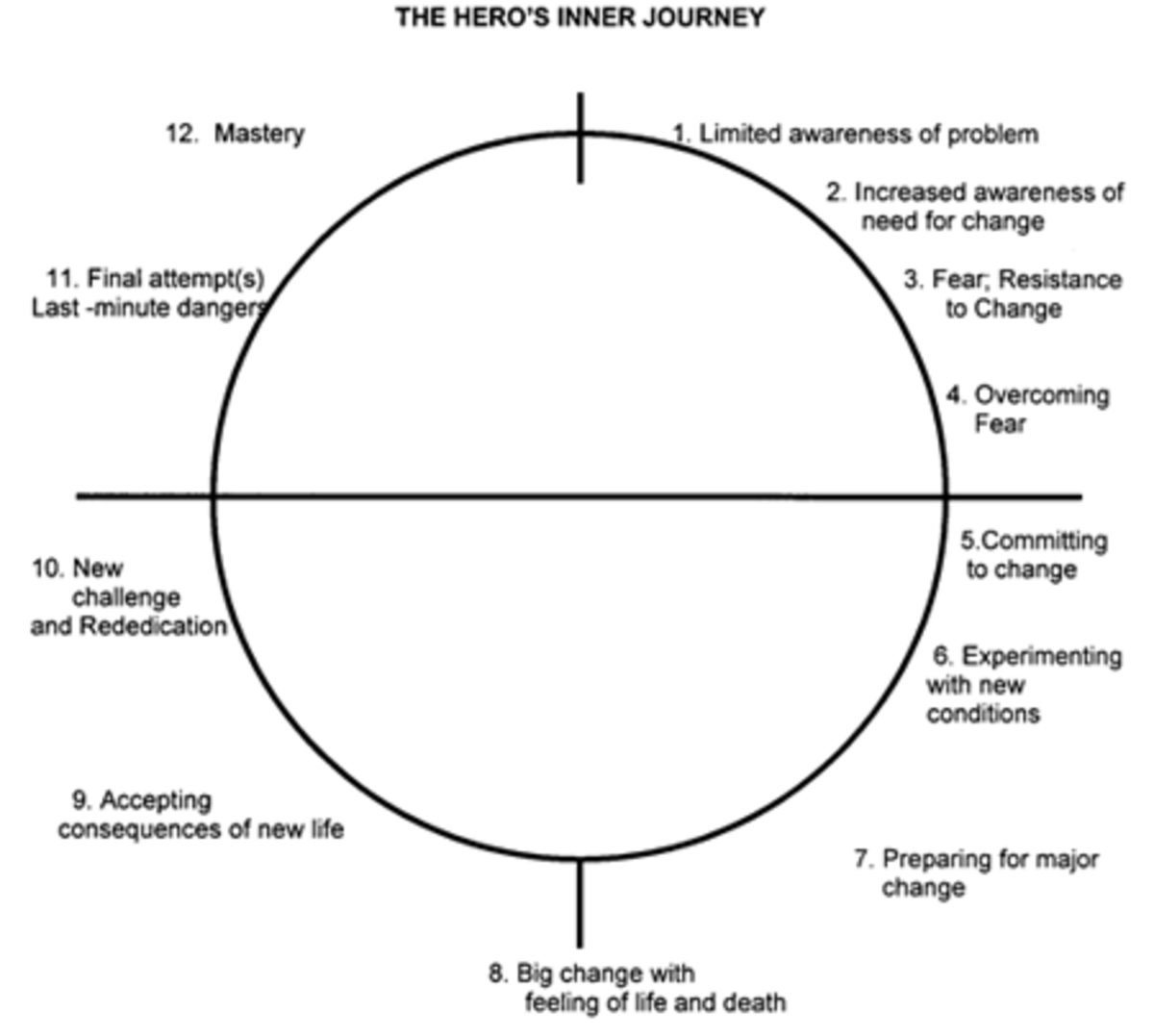
A delightful poem by Portia Nelson - a characters journey.
So what are you waiting for...
Thank you dear reader, for your indulgence, time and patience. Hope you enjoyed this chapter on character building. I do hope you have time to visit the other hubs on this subject too. The links are to the right....
Now go forth and unleash your creations onto the literary world. Your characters maybe quirky or straight, loveable or dastardly, beautiful or ugly, calm or angry - doesn't matter what characteristics you want to give them but make them memorable.
And remember, sometimes they arrive partially formed but they become more well defined and may even take control of your story... go with the flow.
I hope this was useful and hopefully enjoyable. I will see you soon.
Do visit the past chapters in this series:
On Where we get our ideas, where we discourse our inspirations and how to be constantly sourcing inspiration.
On Plot development, where we discuss the concept of plots, how to build one and the trajectory plots take.
On seven hooks to entice your reader, how best to start our stories and how to pull the reader in.
and On description, perception and sensation.
-Mohan Kumar-
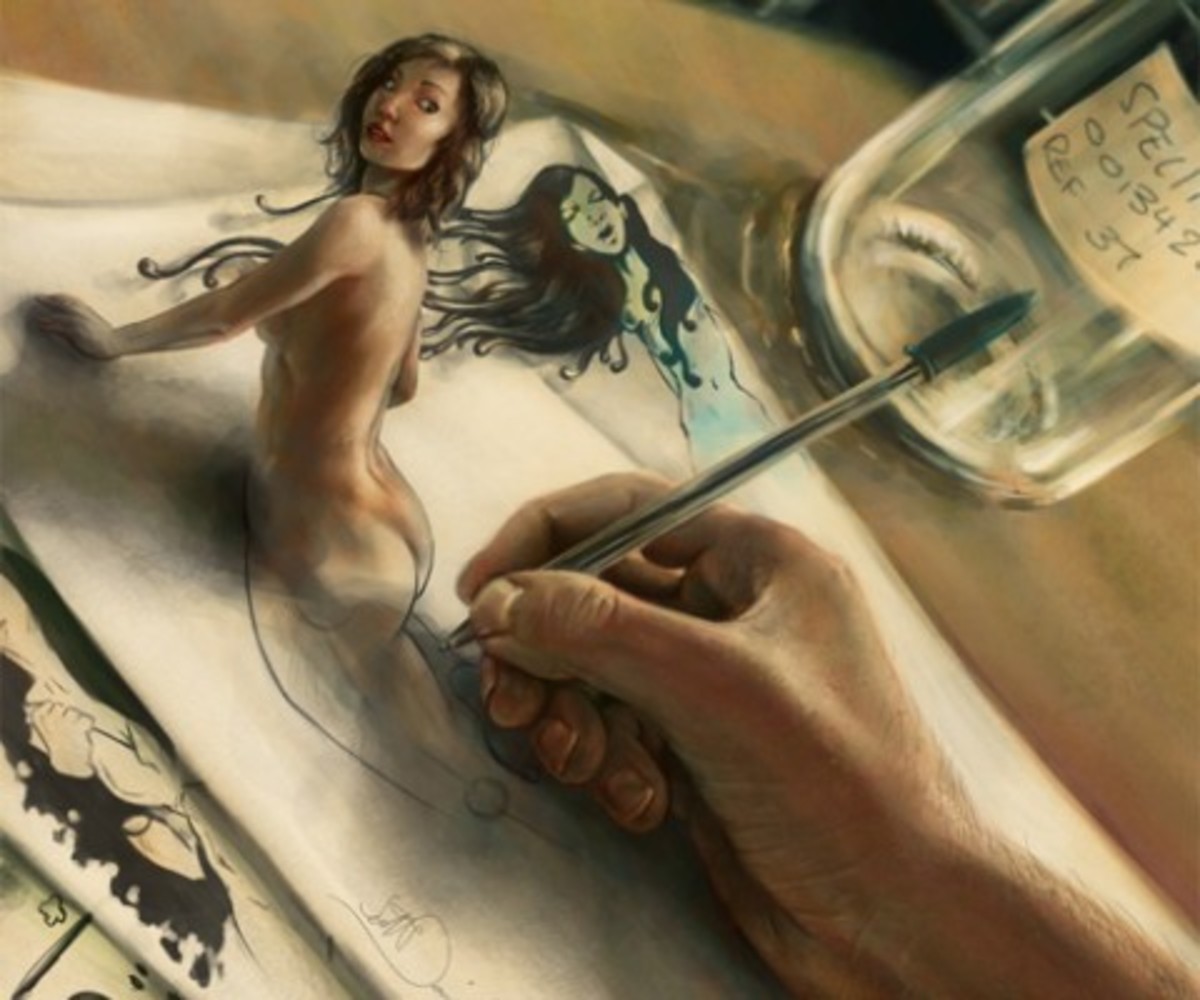
© 2011 Mohan Kumar

